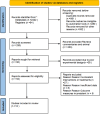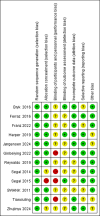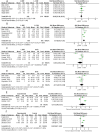The effects of low-load resistance training combined with blood flow restriction on knee rehabilitation in middle-aged and elderly patients: A systematic review and meta-analysis
- PMID: 40455786
- PMCID: PMC12129158
- DOI: 10.1371/journal.pone.0323388
The effects of low-load resistance training combined with blood flow restriction on knee rehabilitation in middle-aged and elderly patients: A systematic review and meta-analysis
Abstract
This meta-analysis evaluates the effectiveness of low-load resistance training combined with blood flow restriction in knee rehabilitation.
Methods: Randomized controlled trials investigating the effects of blood flow restriction training on knee injury rehabilitation were systematically searched in the PubMed, EBSCO, and Web of Science databases for studies published between January 2000 and May 2024. The Cochrane Risk of Bias Tool was used to assess study quality, and statistical analyses were performed using Review Manager 5.3 software.
Results: (1) Compared to low-load control training, blood flow restriction training showed no significant difference in pain scores (standardized mean difference = -0.10, P = 0.46) but significantly improved muscle strength (standardized mean difference = 1.11, P < 0.00001). (2) When compared to high-intensity resistance training, blood flow restriction training demonstrated no significant differences in muscle strength (standardized mean difference = -0.11, P = 0.74) or pain scores (standardized mean difference = -0.84, P = 0.17). (3) Preoperative blood flow restriction training did not significantly improve postoperative pain scores (standardized mean difference = 0.77, P = 0.37); however, among 241 patients undergoing preoperative training, blood flow restriction training significantly enhanced postoperative muscle strength (standardized mean difference = 0.97, P = 0.03).
Conclusions: Although blood flow restriction training has limited effects on reducing pain, it significantly improves muscle strength, particularly in preoperative rehabilitation and low-load training settings, making it a valuable alternative in clinical knee rehabilitation strategies.
Copyright: © 2025 Chen et al. This is an open access article distributed under the terms of the Creative Commons Attribution License, which permits unrestricted use, distribution, and reproduction in any medium, provided the original author and source are credited.
Conflict of interest statement
The authors have declared that no competing interests exist.
Figures
Similar articles
-
The effects of blood flow restriction training on early muscle strength and mid-term knee function following anterior cruciate ligament reconstruction: a systematic review and meta-analysis.J Orthop Surg Res. 2025 Mar 13;20(1):273. doi: 10.1186/s13018-025-05673-8. J Orthop Surg Res. 2025. PMID: 40075371 Free PMC article.
-
Effects of Blood Flow Restriction Training on Muscle Strength and Pain in Patients With Knee Injuries: A Meta-Analysis.Am J Phys Med Rehabil. 2021 Apr 1;100(4):337-344. doi: 10.1097/PHM.0000000000001567. Am J Phys Med Rehabil. 2021. PMID: 33727516 Review.
-
Intermittent blood flow restriction with low-load resistance training for older adults with knee osteoarthritis: a randomized, controlled, non-inferiority trial protocol.Trials. 2024 May 31;25(1):352. doi: 10.1186/s13063-024-08203-9. Trials. 2024. PMID: 38822360 Free PMC article.
-
ADAPTations to low load blood flow restriction exercise versus conventional heavier load resistance exercise in UK military personnel with persistent knee pain: protocol for the ADAPT study, a multi-centre randomized controlled trial.BMC Musculoskelet Disord. 2023 Jul 17;24(1):580. doi: 10.1186/s12891-023-06693-3. BMC Musculoskelet Disord. 2023. PMID: 37461024 Free PMC article.
-
The effects of resistance training with blood flow restriction on muscle strength, muscle hypertrophy and functionality in patients with osteoarthritis and rheumatoid arthritis: A systematic review with meta-analysis.PLoS One. 2021 Nov 10;16(11):e0259574. doi: 10.1371/journal.pone.0259574. eCollection 2021. PLoS One. 2021. PMID: 34758045 Free PMC article.
References
Publication types
MeSH terms
LinkOut - more resources
Full Text Sources
Medical






